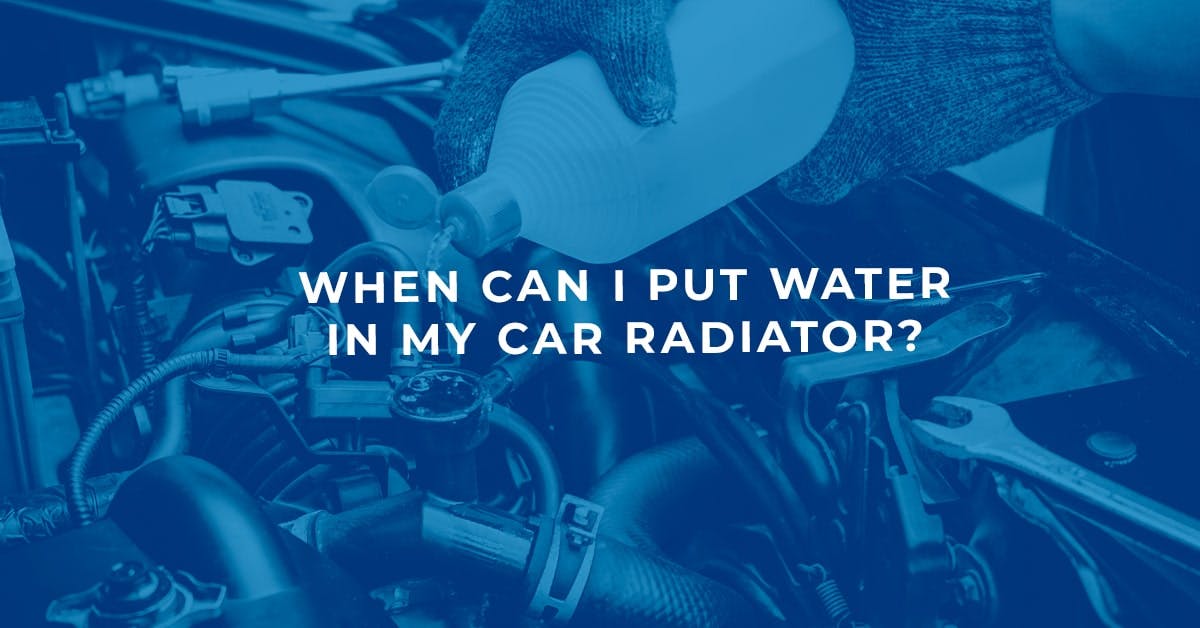As part of an intricate cooling system, your car radiator is an essential component which helps to regulate the temperature of your engine.
You may have considered topping up your car radiator with water in the past, but this can actually do real damage to the internal components of your vehicle.
When it is time to top up, this blog can teach you exactly what to do so that you can always keep your car in good health.
Read on and find out what a car radiator is and why you shouldn't use tap water except in an emergency.
Page Contents
When Is It Safe To Put Water In My Car Radiator?
Due to the extreme weather conditions we often experience in the UK, it is unsafe to use solely water in your car radiator.
During colder periods water can freeze once the temperature reaches 0°C, and expand into ice crystals within the reservoir.
In the warmer months, water can turn into steam as a result of high pressure within the engine.
As you can imagine, water can cause real damage in either circumstance.
When it is time to replenish coolant levels, there are two ways to do so.
You can buy engine coolant as a pre-mixed solution, which is usually made up of a 50:50 ratio of distilled water to antifreeze.
Alternatively, you can mix a 50:50 ratio of distilled water to antifreeze yourself, so that the antifreeze can regulate the boiling point of the liquid.
If you choose to take the latter approach, you should bear in mind that the water you use should always be bottled or distilled.
Tap water contains minerals which can cause damage to the engine, and may even clog or corrode the radiator pipes.
Topping up with water can help you drive to the nearest garage - as long as you keep an eye on the temperature gauge or warning lamp.
Can I Use Tap Water in My Car Radiator in an Emergency?
In an absolute emergency, it is better to use regular clean tap water than to let your coolant level drop too low if this is your only option.
Antifreeze should be added to the container as soon as possible.
You should take care not to overfill the reservoir with tap water as this could damage the larger cooling system.
Whilst adding a little water to coolant shouldn't cause any major damage, adding too much can lower its boiling point and make the coolant ineffective.
What Is a Car Radiator?
A car radiator is part of a complex engine cooling system designed to prevent the engine from overheating when it burns off fuel.
In many modern cars, this cooling system will be made up of the car radiator, a water pump, thermometer and cooling fans.
The thermometer will determine the temperature of the engine, directing the water pump to send coolant through the engine as needed.
This coolant travels through the engine via hoses, before reaching the radiator where it will be cooled down.
The fluid will then head back to the thermometer, ready for when the process repeats itself.
When your car radiator is working as it should, it can keep the engine of your vehicle running at the perfect temperature.
Is My Car Radiator Faulty?
You will likely be able to tell that your car radiator is faulty if you notice a visible leak.
When your car is stationary, look for a puddle - which could be green or red in colour - beneath your engine.
If you notice that your coolant appears to be watery or sludgy, then the problem may be corrosion.
Alternatively, a squealing sound from beneath the bonnet could signal that your water pump has frozen if the temperature has dropped recently.
You should inspect your vehicle’s coolant levels every 2 to 3 weeks, to ensure that your vehicle has enough fluid to prevent the engine from overheating.
If you neglect to replenish these coolant levels regularly - or do so incorrectly - your vehicle may require costly repairs which could have otherwise been avoided.
If you are at all concerned about the health of your car radiator - or simply want to ensure everything is working as it should - be sure to book a service with an expert mechanic and resolve the issue today.








No comments yet
Leave a comment